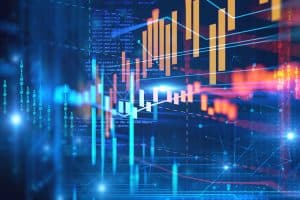 A new study from Acuiti has found increasing investment in automation to combat pressure on manual processes. This has been found to be resulting from the complexity of trade surveillance requirements driven by regulatory demands and heightened volatility.
A new study from Acuiti has found increasing investment in automation to combat pressure on manual processes. This has been found to be resulting from the complexity of trade surveillance requirements driven by regulatory demands and heightened volatility.
Commissioned by Eventus, the report collated views from 71 senior trade surveillance, risk, compliance, technology and trading executives at banks, brokerages and proprietary trading firms.
“Since the 2008 financial crisis, regulators have issued targeted regulations and improved surveillance methods to stamp out abusive behaviour in the markets. Through a combination of enforcement activity and effectiveness reviews, regulators around the world have made clear the need for compliance teams to bulk up their staff and for firms to improve their surveillance tools and methodology,” Joe Schifano, global head of regulatory affairs at Eventus, told The TRADE.
“Combined with increased volatility across asset classes, surveillance analysts endure the combined challenge of an ever-growing number of alerts and heightened regulatory scrutiny. As a result, firms are increasingly considering the efficiency of their trade surveillance programs.”
Speaking to The TRADE, Ross Lancaster, head of research at Acuiti, added: “Trade surveillance departments are working with pressure on two fronts. First, the post-great financial crisis regulations introduced by major jurisdictions demand large amounts of transaction data as well as a proactive approach by firms to detect new and varying methods of market abuse. Second, the sustained market volatility of this year, which has led to large and sudden spikes in trading volumes. This has both increased the overall amount of data to process as well as the number of potentially abnormal transactions that require further investigation.”
Acuiti’s latest report analyses the challenges trade surveillance teams face with the growing scope, detail and enforcement of regulations governing trading, as well as advancements in trading products and techniques.
The study found that 94% of respondents noted increases in the complexity of trade surveillance in the past three years, with 64% stating that it had increased significantly.
Over the last three years, increased regulatory requirements and market volatility were attributed to be the main drivers of heightened complexity in trade surveillance.
The latest report found that the majority of sell-side analysts are spending over 30 hours a week manually closing and investigating alerts, with manual input being heightened by a lack of skilled compliance staff.
Technology has been viewed as a solution to improve efficiency, with firms expressing a desire for increased automated workflows. 64% of banks were found to consider machine learning as very important or critical.
Elsewhere, Acuiti’s study found that more than 60% of respondents had already invested in trade surveillance or were considering doing so within the next 12 to 18 months.
Among the key findings, buy-and-build methodologies were also found to couple the advantages of both third-party and inhouse solutions.
Speaking to The TRADE about how trade surveillance is expected to adapt to an increasingly complex market environment, Schifano said: “It should be no surprise to those who manage surveillance programs to see that 94% of surveyed participants believed that the complexity and challenges of trade surveillance had increased in the past three years. But the finding that 64% said that complexity and challenges ‘increased significantly’ should be a real impetus for change.
“With the perennial pressure on compliance teams to do more with less, we expect that firms will spend a great deal of time considering how to best manage their enormous data challenges while refreshing surveillance technology with newer, automated methods that both reduce false positives and offer improved behavioural analytics.”
Meanwhile, Lancaster told The TRADE, “We anticipate that firms will increasingly take the route of buy and build trade surveillance systems, which combine the advantages of third-party platforms (such as their familiarity to regulators) with scope for customisation.
“We also expect that a significant part of this new breed of offerings will be automation, which is urgently needed to stem the high amount of hours that this study identified teams were spending on resolving alerts.”